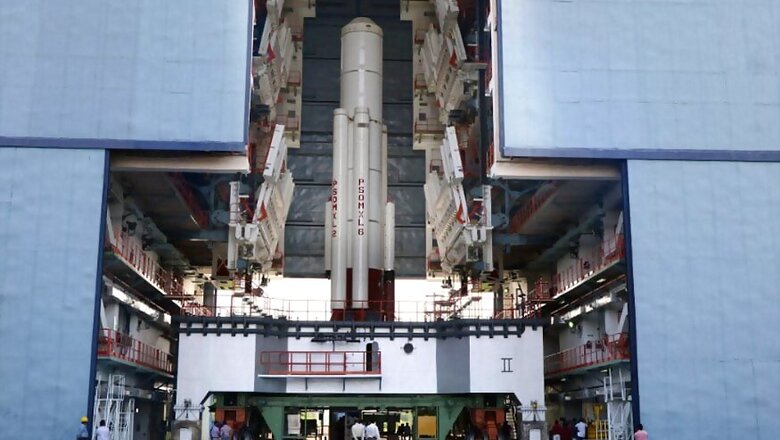
views
Chennai: Buoyed by the successful launch of the South Asia Satellite, Indian Space Research Organisation (ISRO) is now busy preparing for the maiden launch of its heaviest rocket -- the 640-tonne Geosynchronous Satellite Launch Vehicle-Mark III (GSLV Mk III).
The notable aspect of this rocket is that the main and bigger cryogenic engine has been developed by space scientists here and will be powering the rocket for the first time.
"All the officials are confident of the proposed mission's success. The strap-on motors and the core stage/engine have been integrated," Sivan added.
Queried about the slight postponement in the rocket's launch -- earlier it was said the rocket would fly end-May -- Sivan said: "As this is a new rocket, we want to carry out extensive tests and hence there has been a slight change in the launch schedule."
According to him, the GSLV Mk-III will make its maiden voyage during the first week of June.
The GSAT 19, weighing around 3.2 tonnes -- the heaviest satellite to be lifted by an Indian rocket -- is already at the Sriharikota rocket port.
"The rocket's design carrying capacity is four tonnes. The payload will be gradually increased in the future flights of the GSLV Mk-III," Sivan said.
According to ISRO, GSAT-19 is a multi-beam satellite planned to carry Ka and Ku band forward and return link transponders. The satellite's design lifespan is 15 years.
"That was mainly to test the structural stability of the rocket while in flight and the aerodynamics," Sivan said.
During the atmospheric flight phase, a rocket will encounter different kinds of pressures.
"The 2014 mission was a success. The vehicle performed as expected but gave data for slight modifications in rocket's outer shield to improve the aerodynamics. The shape of the heat shield and the strap-on motors has been slightly changed now," Sivan said.
"That mission proved the transition of stage (engine) burn, the rocket's overall design and the separation of various stages," S. Somanath, Director, Liquid Propulsion Systems Centre (LPSC), told IANS.
Somanath, who was earlier Project Director for the GSLV Mk-III, said the inputs of the 2014 mission enabled ISRO reduce the load on the rocket by around 20 per cent.
"Designing the rocket engines and, more particularly, the cryogenic engine of the GSLV-Mk III is not a simple extrapolation of specifications of the GSLV Mk-II's cryogenic engine," Somanath said.
The mass of the GSLV Mk-III's cryogenic engine is double that of the GSLV-Mk II's cryogenic engine.
As to the learnings from developing the cryogenic engine for the GSLV-Mk II, Somanath said: "It enabled us to learn about cryogenic materials. It gave us the experience in handling cryogenic materials. We also established the various procedures from scratch."
According to Somanath, ISRO has got the government's approval to build more GSLV-Mk II rockets and orders for hardware have been placed.




















Comments
0 comment